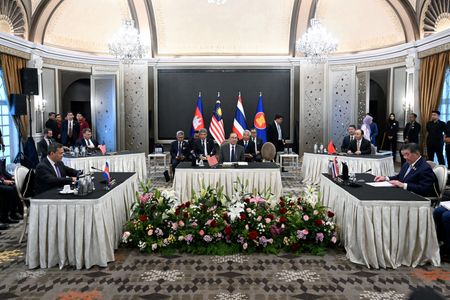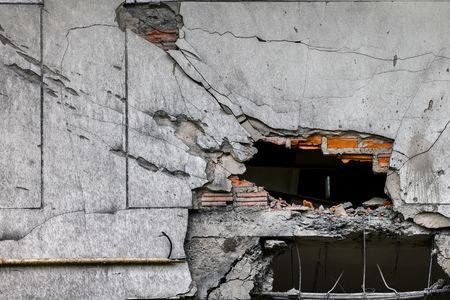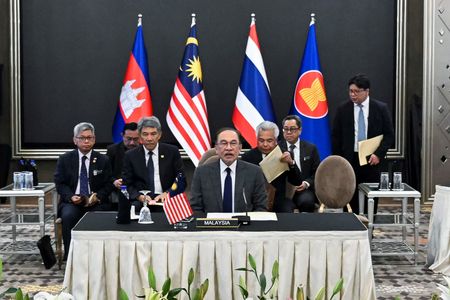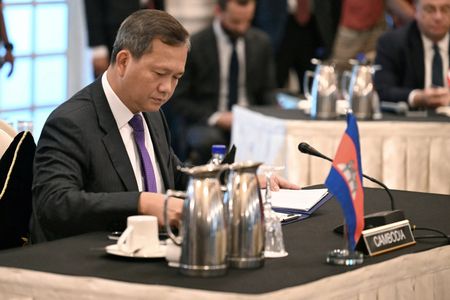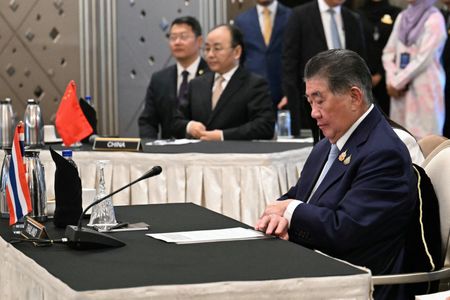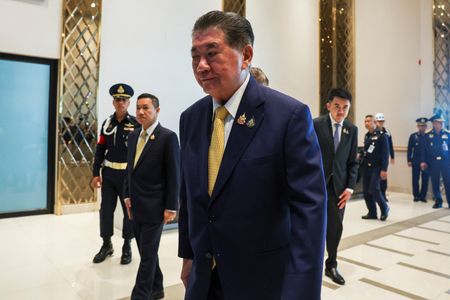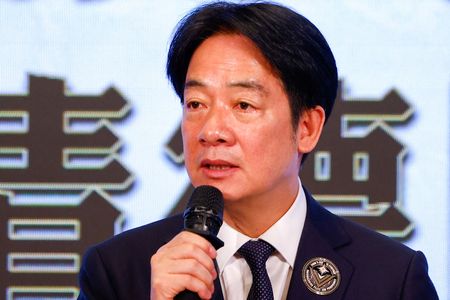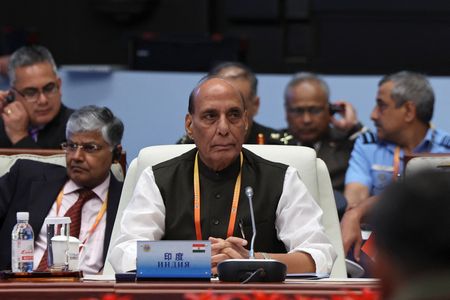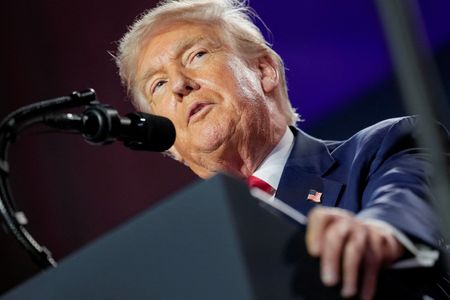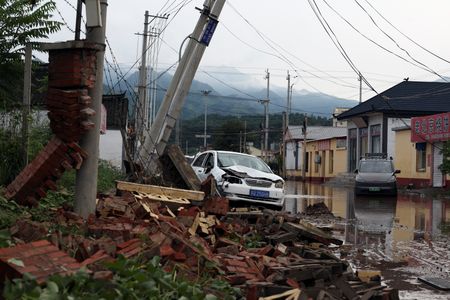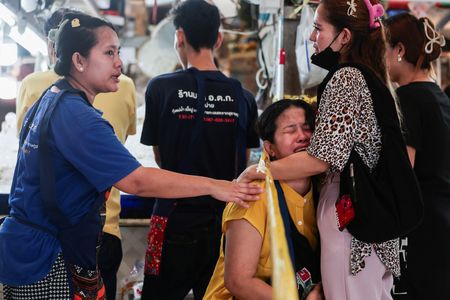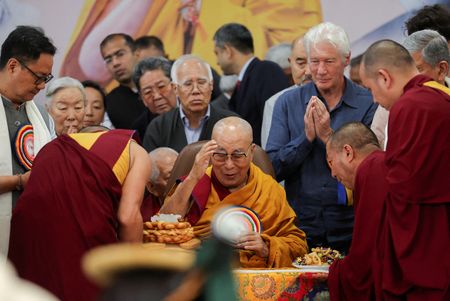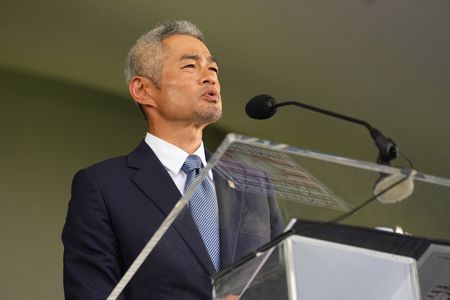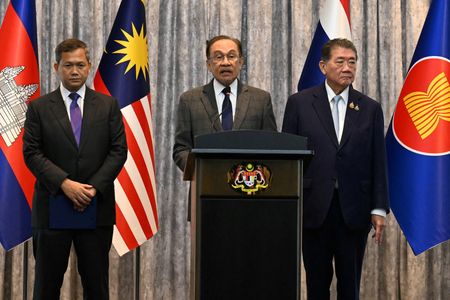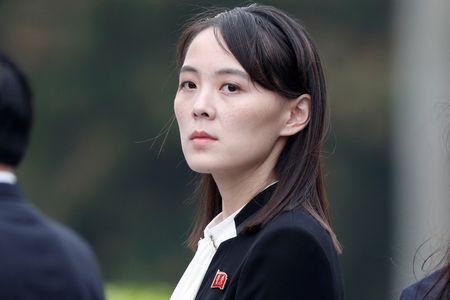By Chayut Setboonsarng, Danial Azhar and Shoon Naing
BANGKOK/PHNOM PENH, (Reuters) -A ceasefire between Cambodia and Thailand came into effect at midnight (1700 GMT) on Monday, hours after they agreed to halt their deadliest conflict in more than a decade following five days of intense fighting that displaced over 300,000 people.
After efforts by Malaysia, chair of the ASEAN regional bloc, the United States and China to bring both sides to the table, the two countries’ leaders agreed during talks in Putrajaya to end hostilities, resume direct communications and create a mechanism to implement the ceasefire.
“This is a vital first step towards de-escalation and the restoration of peace and security,” Malaysian Prime Minister Anwar Ibrahim earlier told a press conference, flanked by the Thai and Cambodian leaders, following more than two hours of talks at his residence in Putrajaya, Malaysia.
At least 38 people, mostly civilians, have been killed in clashes in multiple locations along their 800 km (500 miles) border since fighting between the two Southeast Asian neighbours erupted on July 24.
There were no official reports of unrest from either side in the hours leading up to the ceasefire taking effect.
The truce talks followed a sustained peace push by Anwar and U.S. President Donald Trump’s phone calls to both leaders at the weekend, where he said he would not conclude trade deals with them if fighting continued. Both sides face a tariff of 36% on their goods in the U.S., their biggest export market.
Trump in a post on Truth Social on Monday congratulated all parties and said he had spoken to the leaders of Thailand and Cambodia and instructed his trade team to restart negotiations.
“By ending this War, we have saved thousands of lives … I have now ended many Wars in just six months — I am proud to be the President of PEACE!” Trump said.
DECADES OF DISPUTES
The two countries have wrangled for decades over border territory and have been on a conflict footing since the killing of a Cambodian soldier in a skirmish late in May, which led to a troop buildup on both sides and a full-blown diplomatic crisis that brought Thailand’s fragile coalition government to the brink of collapse.
They accuse each other of starting the fighting last week that within hours escalated from small arms fire to heavy artillery and rockets and Thailand’s unexpected scrambling of an F-16 fighter jet to carry out airstrikes.
Thai acting Prime Minister Phumtham Wechayacha praised Trump for pushing the peace effort and said trade negotiations would start from a good place.
“I thanked him from my heart for what we received from him and helped our country move beyond this crisis,” he told reporters on his return from Malaysia after speaking to Trump.
“After today the situation should de-escalate.”
Simmering tensions boiled over last week after Thailand recalled its ambassador to Phnom Penh and expelled Cambodia’s envoy, in response to a second Thai soldier losing a limb to a landmine that Bangkok alleged Cambodian troops had laid.
Cambodia has strongly denied the charge, as well as Thai accusations that it has fired at civilian targets including schools and hospitals. It had accused Thailand of “unprovoked and premeditated military aggression”.
‘DECISIVE MEDIATION’
U.S. Secretary of State Marco Rubio in a statement said he and Trump expected all sides to “fully honour their commitments to end this conflict”.
Cambodian Prime Minister Hun Manet said his Thai counterpart had played a positive role and he deeply appreciated Trump’s “decisive mediation” and China’s constructive participation.
In social media posts, Hun Manet said he had returned to Cambodia “with brilliant results” and had spoken with Trump, who expressed a desire for lasting peace.
The fighting has scarred border communities on both sides.
In Thailand’s Sisaket province, a house was reduced to splintered wood and twisted beams after it was struck by artillery fire from Cambodia. The roof had caved in, windows hung by the frame and power lines drooped over the structure.
Amid the din of occasional artillery fire, homes and shops remained shut and a four-lane road was deserted except for a few cars and military vehicles.
Dozens of displaced residents lined up quietly for their evening meal at an evacuation centre about 40 km away from the frontlines. A few children played with dogs, others swept the dusty floor.
Fifty-four-year-old Nong Ngarmsri just wanted to go back to her village.
“I want to go to my children who stayed back,” she said. “I want them to cease firing so that I can go home.”
(Reporting by Panarat Thepgumpanat, Chayut Setboonsarng, Panu Wongcha-um and Devjyot Ghoshal in Bangkok, Shoon Naing and Artorn Pookasook in Sisaket, Chantha Lach in Phnom Penh, Danial Azhar and Mandy Leong in Putrajaya, Malaysia; Writing by John Mair and Martin Petty; Editing by Raju Gopalakrishnan, Barbara Lewis and Deepa Babington)

